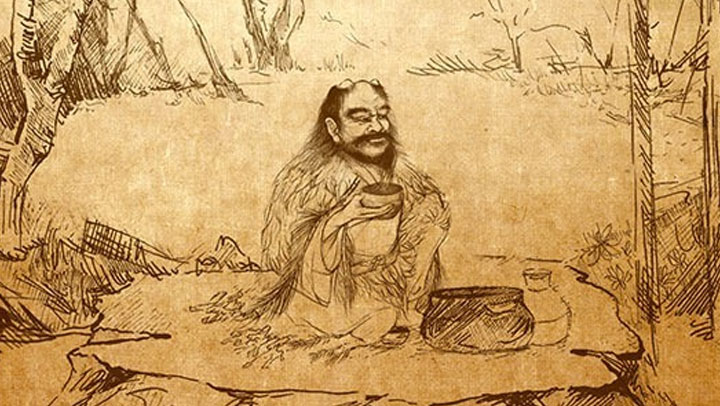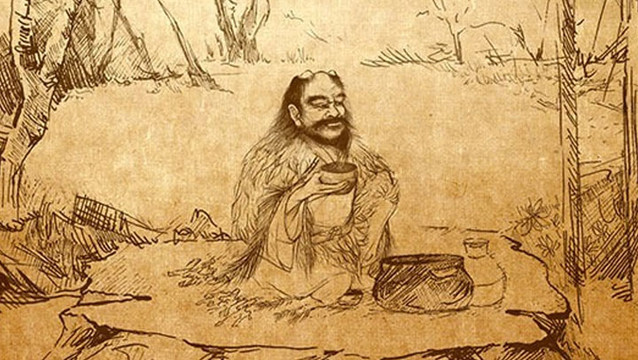By:International Tea Importers - 07/09/2021

As a popular beverage that is enjoyed around the globe, tea has become so ingrained into our daily lives that many of us do not think about where it came from and how it came to be. Tea is a centuries old tradition that has hardly changed since it was first discovered.
The purpose of this article is to summarize the history of tea in China and how it spread throughout the world, becoming a favourite beverage among millions of people.

The Shennong legend
The origin of tea in China has a history that goes back 5,000 years and the person that is credited to discovering tea is the ancient Chinese emperor named Shennong who lived around the year 2800 BCE.
Shennong was known to be an herbalist that studied many different properties and benefits of plants. The legend begins that, as emperor, he had decreed that people should boil their water before drinking, and one day, while he held a bowl of freshly boiled water, some leaves from a tea plant fell into it.
Shennong was fascinated by the change in colour and smell of the water with the tea leaves and he decided to take a drink from it. The legend says that he immediately felt rejuvenated after drinking the tea, and from then on the practice of drinking tea began to spread throughout China and eventually the rest of the world. He is also said to have given the name “cha” to the beverage, in which the original meaning of the word was “to investigate”.

Tea In Early China
The earliest physical evidence of tea was recently discovered in 2016 in a tomb called the Han Yangling Mausoleum that was built for the Jing Emperor Liu Qi. The tea was dated to be from around the year 150 BCE, which is a hundred years older than the first documented mention of tea in 59 BCE.
In the Tang dynasty (618-906 AD), a man named Lu Yu wrote the first book about tea, titled Cha Ching, or The Classic of Tea. The book advocates the benefits of tea drinking and describes the cultivation of tea plants, the processing of tea leaves, the skills required to make tea and the enjoyment of tea as a daily drink.
The Classic of Tea boosted the popularity of tea as it not only helped spread the knowledge of it, but Lu Yu also connected the tradition of drinking tea to Buddhist ideologies. Tea had been important to Buddhist monks for centuries because they needed the caffeine to help stay awake while they were practicing meditation.
Throughout China’s history with tea, it has also been viewed to have medicinal properties. The medicinal history of tea can also be traced back to another version of the Shennong legend that states he used tea to heal himself after he had ingested a poisonous plant.

Evolution Of Chinese Tea
Also in the Tang dynasty, the knowledge and tradition of drinking tea was passed to Japanese Buddhist monks that had come to China for their studies. From their time in China, they returned to Japan and started their own tea traditions.
Matcha — a popular drink made from whisking green tea powder in water — actually has origins in China from around the year 1191 when the Japanese Buddhist monk Eisai brought “tencha”, powdered green tea, back to Japan.
Around this time period, the most popular way to prepare tea leaves for sale was to steam, pound, and form the leaves into a brick shape. Later on, in the Song dynasty (960-1279), loose leaf tea was invented, and tea houses began to pop up throughout China as the culture around tea continued to be developed.
Chinese people continued to experiment with processing tea leaves, and in the Ming dynasty (1368-1644) they discovered that if they pan-fried the leaves before, they had a chance to oxidize, then roll and dry them, they kept their bright green colour. This is how green tea was first created.

The Global Chinese tea trade
It was during the early Ming Dynasty (1368-1644) that China began exporting tea to neighbouring countries like Russia and Nepal. The main payment for Chinese tea during the early stages of trade was horses. Tea became so popular in Tibet that pressed tea leaves were once used as currency.
Although the first Europeans to receive Chinese tea in a trade were the Portuguese, the Dutch are actually the ones that properly introduced tea to Europe in 1610. At first, due to the high cost of tea in the Netherlands, it was reserved as a drink exclusively for the wealthy. The Dutch elite had created their own culture of tearooms that they used to socialize in. The Dutch are also credited for being the first people to use milk in their tea.
The tradition of drinking tea passed on to the English aristocrats with Charles II and his Portuguese wife Princess of Braganza. Both of them had grown up drinking tea in the Netherlands and Portugal and they brought the popularity with them to the British Isles. When the price of tea dropped, average people were able to purchase it for themselves and the demand continued to grow as Europeans fell in love with the beverage.
The Dutch are once again credited with introducing tea to America in the 17th century through their colony named New Amsterdam that is located in present day New York. However, the history of tea doesn’t stop there.
Most people are familiar with the Boston Tea Party, a historic event that took place in 1773, when Massachusetts colonists attacked British tea ships and dumped 342 chests of tea into the harbour to protest the Tea Act, which would have given British imports a monopoly.

Tea In The Modern Day
In the world of tea, the United States also contributed its own creations. Tea bags were first made of silk by Thomas Sullivan in 1908, and iced tea was created by Richard Blechynden in 1904 for the St. Louis World Fair.
All the way from ancient China with the discovery of green tea to the modern day where we now have many different varieties and blends of tea that range from oolong to chai, it continues to be a beloved drink around the world. Whether you prefer your tea hot, iced, sweetened, or with milk, there is a flavour of tea for everyone’s taste.
Tea BlogTea and Allergy ReliefBy:International Tea Importers -26/08/2021 Share ShareTea, one of the world’s favorite beverages, could be a vital tool in helping reduce simple symptoms of allergies. Allergies are the body's immune system reaction to pollen, grass, and other common environmental [...]
How To Make The Perfect Cup of Tea Have you ever stopped to think about how you go about making a cup of tea? How long to let it steep or even how hot the water needs to be? Every tea requires its own steeping process, something most of the population in the [...]
Tea BlogSummer Iced Tea Brewing TipsBy:Siobhan Nasby -25/07/2021 Share ShareOn a hot summer’s day nothing sounds better than a nice, cold glass of iced tea. Better yet, how does a chilled glass of a cold brew iced tea sound? As we continue [...]
Tea BlogWho is ITI:Let us Re-Introduce OurselvesBy:Siobhan Nasby 13/07/2021 Share ShareOur origin story here at ITI starts off rather humbly. In the year of 1992 our founder Devan Shah started the company in his father-in-law’s garage, at this time the company was [...]

 />
/>